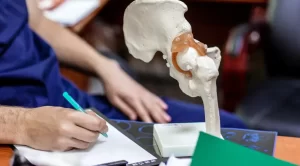Groin pain is often blamed on strained muscles or aging joints—but what if the source isn’t in your groin at all? In many overlooked cases, sciatica is the hidden cause, radiating pain through nerve pathways few patients (and providers) consider. Understanding this neurological link is critical, especially for adults over 40 facing persistent discomfort. Pinpointing the true origin of groin pain can make the difference between temporary relief and lasting recovery.
Understanding Groin Pain: Common Misconceptions and Overlooked Causes
Groin pain is often attributed to local issues like muscle strains, hernias, or hip joint degeneration—but this narrow view can lead to misdiagnosis. One overlooked reality is that the groin acts as a neurological crossroads, where pain from distant sources—like the lower spine or pelvis—can converge. The lumbar plexus and associated nerves, including the obturator and femoral nerves, pass near the groin, meaning that compression or irritation in the lower back can manifest as localized groin discomfort. In postmenopausal women and aging men, vascular or even visceral issues like referred pain from abdominal organs are sometimes missed altogether. This complexity makes groin pain one of the most misinterpreted symptoms in orthopedic care. Understanding its multifactorial nature—beyond just “hip arthritis” or “muscle strain”—is essential for accurate diagnosis and effective treatment planning.
What Is Sciatica? A Brief But Important Overview
Sciatica is commonly recognized as pain that radiates down the leg, typically originating from the lower back, but its scope is far broader. The condition arises when the sciatic nerve—one of the longest nerves in the body—becomes compressed or irritated. This nerve travels from the lower spine, through the buttocks, and into the legs. While leg pain is most prevalent, sciatica can also manifest in unexpected areas like the groin, hips, and even the pelvic region. The pain may not always follow a clear, linear path, often being mistaken for joint issues or muscle strains. The root causes of sciatica are diverse, including herniated discs, spinal stenosis, or even tight muscles like the piriformis, which can compress the nerve. Because sciatica’s symptoms are often widespread, distinguishing it from other conditions like hip pain requires keen awareness and careful diagnosis.
Sciatica and the Groin: Is There a Connection?
The connection between sciatica and groin pain is often overlooked due to the assumption that groin discomfort is exclusively related to the hip joint or muscles. However, the sciatic nerve’s expansive reach can cause referred pain in the groin area. The sciatic nerve branches from the lumbar spine and runs through the pelvis, passing close to several key structures in the groin. When the nerve becomes compressed or irritated—due to a herniated disc, degenerative disc disease, or spinal stenosis—it can send pain signals to unexpected locations, including the groin. This can mimic other conditions, such as hip flexor strains or hernias. The pain may be dull or sharp, and it often worsens with movement, particularly when bending or twisting. This overlap in symptomatology can make sciatica in the groin difficult to distinguish from other hip-related issues without a thorough examination.
Hip Pain vs. Sciatica: How to Tell the Difference
While hip pain and sciatica often coexist, they originate from very different structures—and recognizing the difference is key to effective treatment. Hip joint pain typically stems from the ball-and-socket joint itself and may present as stiffness, limited range of motion, or pain when bearing weight. It often localizes in the groin or front of the thigh and can be aggravated by activities like climbing stairs or prolonged standing. Sciatica, however, originates in the lumbar spine and travels along the sciatic nerve, often presenting as radiating pain that may pass through the buttock, down the leg, and—more rarely—into the groin. Sciatica is more likely to involve neurological symptoms such as tingling, numbness, or muscle weakness. Another important distinction is that hip arthritis tends to worsen gradually over time, whereas sciatica pain can appear suddenly and fluctuate depending on spinal position and nerve compression.
Real Signs It Might Be Sciatica (Not Just a Pulled Muscle)
Groin discomfort is often mistaken for a pulled muscle, especially in active adults or older individuals with previous injuries. However, certain signs point more toward sciatic nerve involvement than soft tissue strain. Here are unique indicators that your groin pain might actually stem from sciatica:
- Pain that radiates beyond the groin: Unlike a localized muscle strain, sciatica often causes a spreading or shooting sensation down the thigh, buttock, or even into the calf.
- Pins and needles in the inner thigh or leg: Neurological sensations like tingling or numbness signal nerve irritation, which is not typical of muscular injuries.
- Groin pain worsens when sitting: Sciatica-related groin pain often intensifies with prolonged sitting due to increased pressure on the lumbar discs—something muscle strains rarely react to.
- Sudden onset without trauma: If your groin pain appeared without an injury or overuse event, a nerve root issue like sciatica becomes more likely.
- Pain that improves when walking or standing: Unlike a pulled groin muscle that may hurt with activity, sciatic pain often eases in standing or walking positions.
- Lower back stiffness or discomfort accompanies the pain: This combination points to a spinal origin rather than an isolated groin issue.
- Pain triggered by coughing or sneezing: Sudden abdominal pressure can exacerbate sciatic nerve pain due to increased disc pressure—muscle strains typically aren’t affected this way.
- Muscle weakness in the thigh or knee: Neurological involvement can subtly reduce strength in the leg, especially with certain movements or weight-bearing tasks.
Treatment Options for Sciatica-Related Groin Pain
Effective treatment for sciatica-related groin pain hinges on targeting the nerve root irritation at its source—usually in the lumbar spine—not just addressing symptoms near the hip. A personalized plan often begins with guided physical therapy focused on lumbar stabilization and nerve gliding techniques to relieve pressure along the sciatic pathway. Anti-inflammatory medications or targeted epidural steroid injections may be used to reduce nerve root inflammation. In some cases, specialized manual therapy, including myofascial release around the psoas and pelvic floor, offers surprising relief by reducing tension that exacerbates nerve entrapment. Advanced clinics may also use neuromuscular re-education and postural retraining to prevent recurrence. Importantly, groin pain with neurological origin often resists typical orthopedic treatments like corticosteroid shots to the hip—highlighting the importance of accurate diagnosis and a treatment approach rooted in spinal and nerve health.
Exercises That May Help—And What to Avoid
For sciatica-related groin pain, not all movement is beneficial—some common stretches may actually worsen symptoms. Instead of traditional groin or hip openers like deep lunges or butterfly stretches, which can irritate the nerve, focus on exercises that promote spinal decompression and nerve mobility. Gentle pelvic tilts, knee-to-chest stretches, and supine hamstring glides can help alleviate tension along the sciatic nerve without overloading the groin. Core stability work—especially involving the transverse abdominis and multifidus—can support the lumbar spine and reduce nerve compression. Avoid high-impact activities, aggressive stretching, or exercises that involve forward flexion of the spine, like toe touches or seated leg presses. These movements may exacerbate lumbar disc pressure and intensify nerve irritation. It’s essential that exercises are customized and progressed based on the individual’s response—not just the symptom location—since the true source of pain is often upstream in the spine.
Conclusion: Knowing the Source Is the First Step Toward Relief
Groin pain that lingers or radiates may not be what it seems. When the discomfort is actually rooted in the spine, mislabeling it as a hip or muscle issue can delay healing and lead to ineffective treatments. Recognizing the neurological signs of sciatica is crucial for accurate diagnosis and lasting relief. At SFHips, we specialize in identifying the true origin of complex hip and groin pain. If you’re experiencing symptoms that don’t quite add up, it’s time to dig deeper. Visit us or call (415) 530-5330 to schedule an expert evaluation today.









